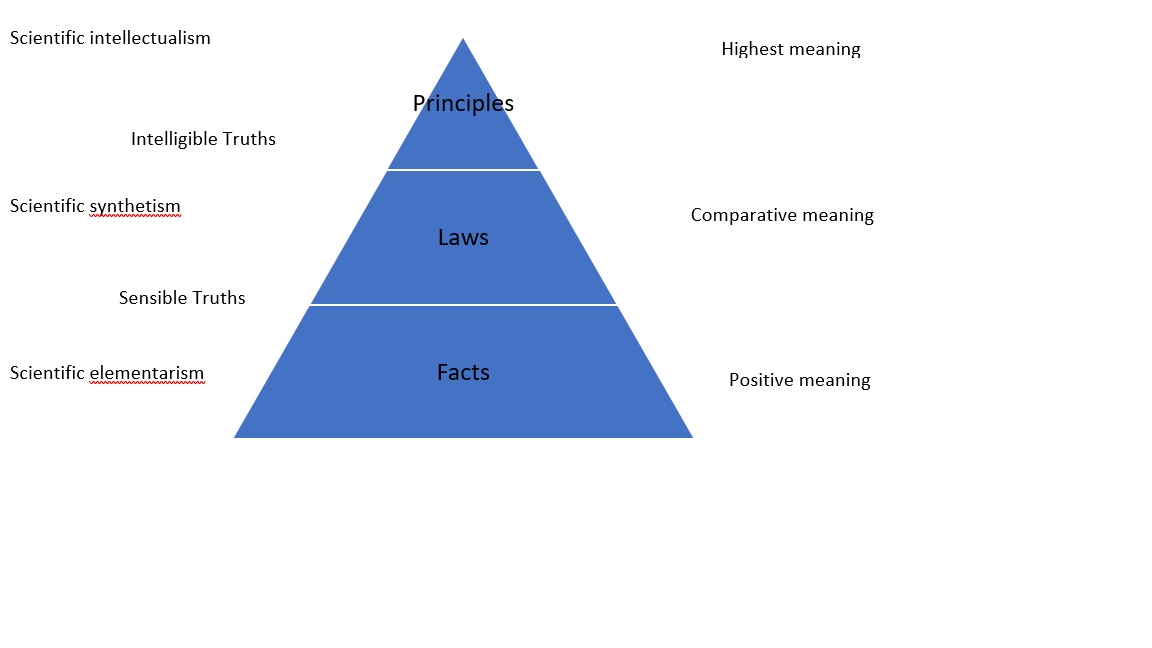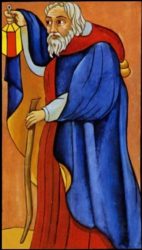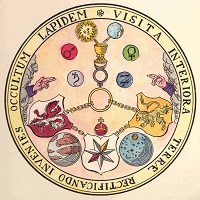Among angelic minds, according to the authority of Dionysius and St. Thomas, the glory of our theology, that is highest which by its intelligence understands with the fewest concepts and forms what lower minds understand with many and varied ones. ~ Pico della Mirandola, Heptaplus
In the Letter on the Magician in Meditations on the Tarot, we are referred to Papus’ description of the method of analogy:
This is my translation from the French of the chapter on analogy in Papus’ book.
Analogy
After having determined the existence in antiquity of a real science, its mode of transmission, the general subjects which it preferred to study, let’s try to push our analysis further in determining the methods employed in the ancient science that we have seen to be Occult Science (Scienta occulta).
The goal pursued was, as we know, the determination of the invisible through the visible, the noumenon through the phenomenon, the idea through the form.
The first question that it is necessary for us to resolve is to know if that connection of the invisible to the visible truly exists and if that idea is the expression of a pure mysticism.
I believe I have sufficiently made apparent by the example of the book, previously stated, what a study of the visible, of the phenomenon was in comparison to a study of the invisible, of the noumenon.
How can we know what the author wanted to say by seeing the signs which he used to express his ideas?
Because we know that there exists a consistent connection between the sign and the idea that it represents, that is, between the visible and the invisible.
Likewise, we can immediately deduce the idea by seeing the sign. Likewise, we can immediately deduce the invisible from seeing the visible. But in order to discover the idea hidden in the print character, it is necessary for us to learn to read, that is to say, to use a special method. In order to discover the invisible, the occult of a phenomenon, it is also necessary to learn to read by a special method.
The principal method of Occult Science is Analogy. By analogy, one determines the connections that exist between the phenomena.
Three principle methods can lead to the goal of the study of man:
- One can study man by his organs and their function: this is the study of the visible, study by induction.
- One can study man through his life, his intelligence, and what is called his soul: this is the study of the invisible, study by deduction.
- Finally, one can consider, reuniting the two methods, the connection that exists between the organs and their function, either between two functions or between two organs. That is study by analogy.
In this way, if we consider the lung, the science of its details will teach us that this organ receives air from the outside, which undergoes a certain transformation in him.
If we consider the stomach, the same science will teach us that this organ is charged with transforming the food that it receives from the outside.
The science of the phenomena stops there; it cannot go further than the observation of the Fact.
Analogy, seizing these facts and treating them by generalization, that is to say, by the method opposed to the method of the detail, formulates thus the phenomena:
- The lung receives from the outside something that it transforms.
- The stomach receives from the outside something that it transforms.
- Therefore, the lung and the stomach, exercising an analogous function, are analogous to each other.
These conclusions will appear more than bizarre to men devoted to the study of details; but if they remember this new branch of anatomy that is called philosophical anatomy, if they recall the analogy perfectly established between the arm and the leg, the hand and the foot, then they will see that the method that led me to the above conclusions is only the development of what preceded the birth of philosophical anatomy.
If I have chosen as an example the analogy between the lung and the stomach, it is to guard against an error that is made very often and which closes to everyone the knowledge of the Hermetic texts. That is the belief that two analogous things are similar.
That is completely false: two analogous things are no more similar than the lung and the stomach, or the hand and the foot. I repeat that this remark is one that is no longer important for the study of occult sciences.
The analogical method is therefore neither deduction nor induction; it is the usage of the clarity that results from the union of these two methods.
If you want to know a monument, two means are available to you:
- Go around or rather crawl around the monument while studying its smallest details. You will thereby know the composition of its smallest parts, the relations that they affect between them, and so on; but you will have no idea of the wholeness of the edifice. This is the use of induction.
- Go up to a high point and look at your monument the best that is possible for you. You will thereby have a general idea of its wholeness; but without the least idea of the details. This is the use of deduction.
The flaw of these two methods jumps to the eyes without the need for numerous commentaries. Each one of them lacks what the other possesses. Reunite them and the truth will be produced resoundingly. Study the details and then go to the top and begin again so that it will be necessary, you will know your edifice perfectly. Unite the method of the physicist to that of the metaphysician and you will give rise to the method of analogy, the real expression of the ancient synthesis.
To do only metaphysics like the theologian is as wrong as doing only physics like the physicist. Build the noumenon on the phenomenon and the truth will appear!
What to conclude from all that? It is necessary to conclude from it that the challenging book, in its critical part, demonstrates for all time the vanity of philosophical methods with regard to the explanation of the phenomena of high physics, and demonstrates the necessity to constantly keep in front of you the abstraction with the observation of the phenomena, condemning irrevocably in advance everything that remains in pure phenomenalism or rationalism.
We have just taken a new step in the study of ancient science by determining the existence of this absolutely special method but that must not yet be enough for us. Indeed, let us not forget that the goal that we pursue is the explanation, however rudimentary that it is otherwise, of all the symbols and of all these reputedly mysterious allegorical stories.
When, in speaking of the analogy between the lung and the stomach, we generalized the facts discovered by experimental or inductive science, we have elevated these facts by one degree.
So, I am asked if there are degrees between the phenomena and the noumena.
It suffices from a little observation in order to realize that many facts are governed by a small number of laws. It is by the study of these laws considered under the name of secondary causes that the works of the sciences bring.
But these secondary causes are themselves governed by a very restricted number of first causes. The study of the latter is moreover perfectly disdained by contemporary sciences which, relegated to the domain of sensory truths, abandon their research to the dreamers of all schools and all religions. However, it is there that Science resides.
We have not have to argue for the moment who is right and who is wrong; it is sufficient to note the existence of this triple gradation:
- Infinite domain of FACTS.
- More restricted domain of LAWS or secondary causes.
- More restricted domain of PRINCIPLES or first causes.
We can summarize all this in a diagram:

This gradation, based on the number Three, plays a considerable role in ancient science. It is on it that is largely based the domain of analogy. We must also pay some attention to its developments.
These three terms are found in man in the body, life, and will.
Any part whatever of the body, a finger for example, can be removed from the influence of the will without ceasing to live (radial or ulnar paralysis); it can moreover be, by gangrene, removed from the influence of life without ceasing to move.
There are therefore three distinct domains: the domain of the body, the domain of life exercising its action by means of a series of special drives (the great sympathetic, vasomotor nerves) and localized in the blood corpuscle. The domain of the will acting through the special drives (voluntary nerves) and having no influence on the organs essential to the maintenance of life.
We can, before going further, see the utility of the analogical method for clarifying certain obscure points, and this is how:
If any thing whatever is analogous to another, all the parts of which that thing is composed are analogous to the corresponding parts of the other.
In this way, the ancients established that man was analogical to the Universe. For that reason, they called man the microcosm (small world) and the Universe the macrocosm (large world). It follows that, in order to know the flow of life in the Universe, it suffices to study the vital flow in man, and reciprocally, in order to know the details of the birth, growth, and death of a man, it is necessary to study the same phenomena in the world.
All that will appear quite mystical to some, quite obscure to others; also, I ask you to have patience and to refer to the following chapter where all the necessary explanations on this subject are found.


